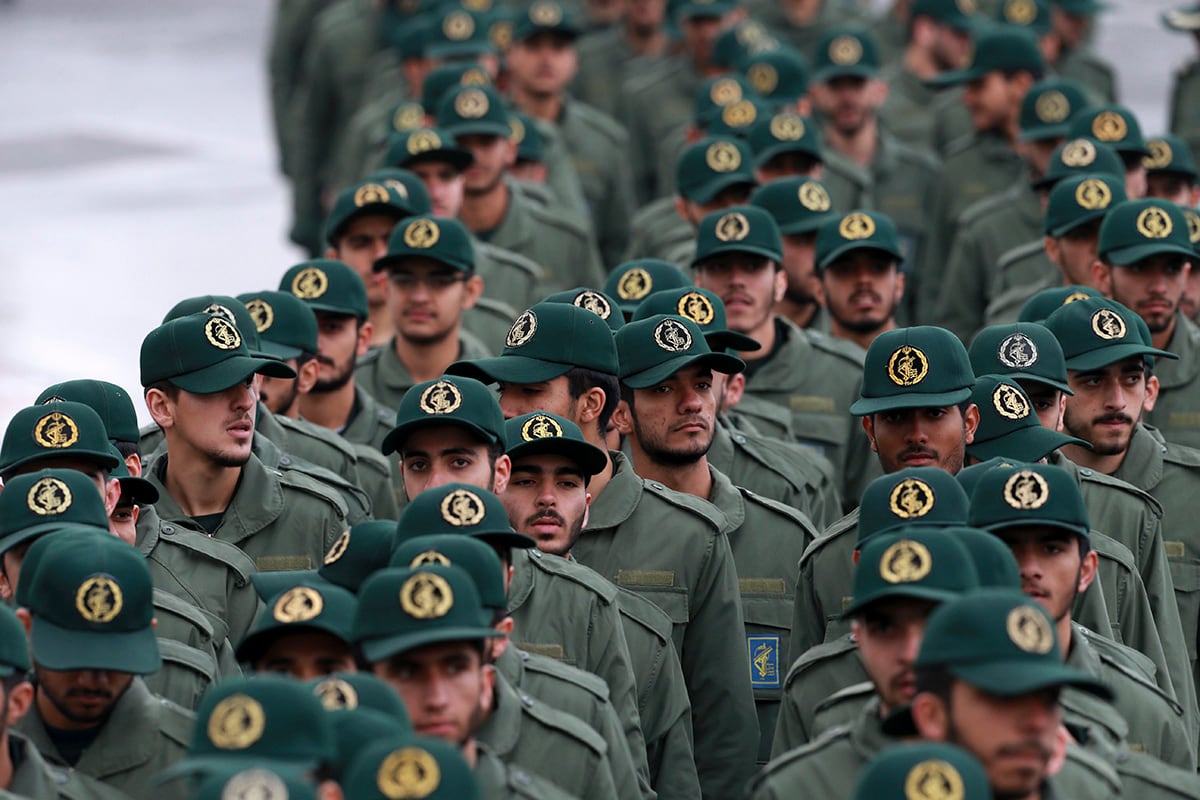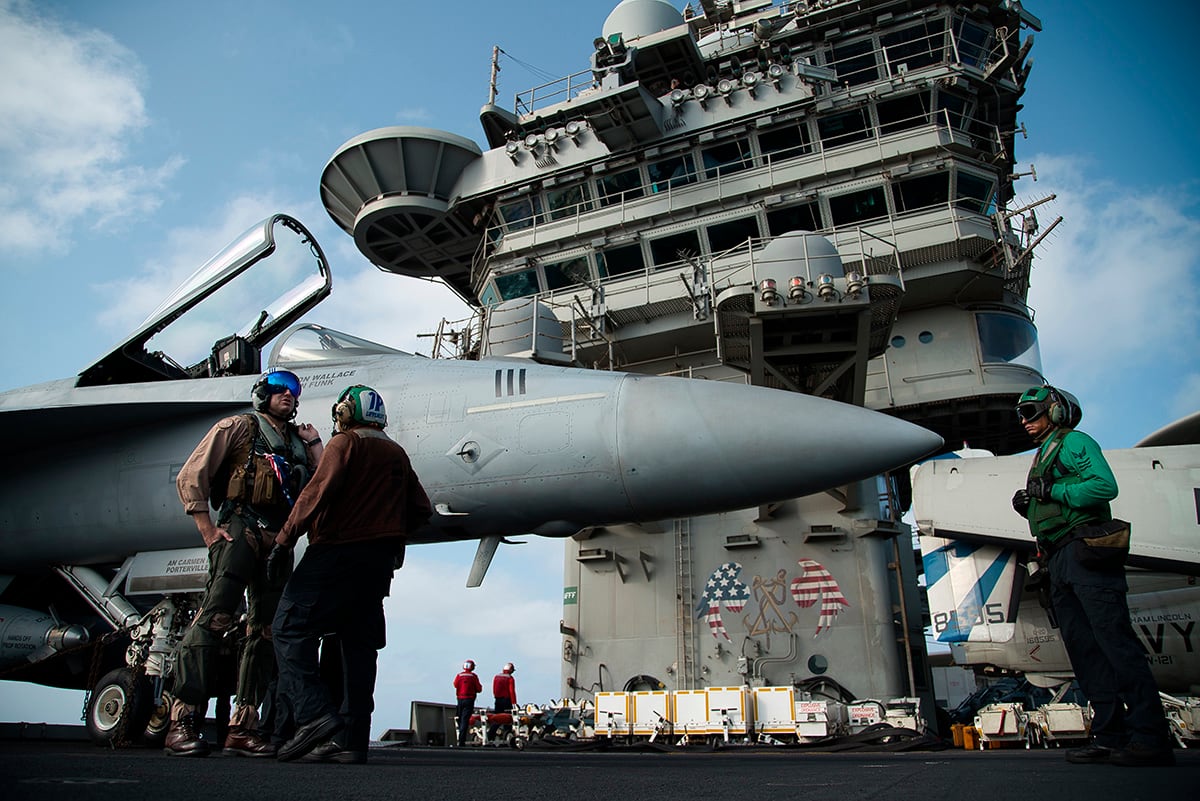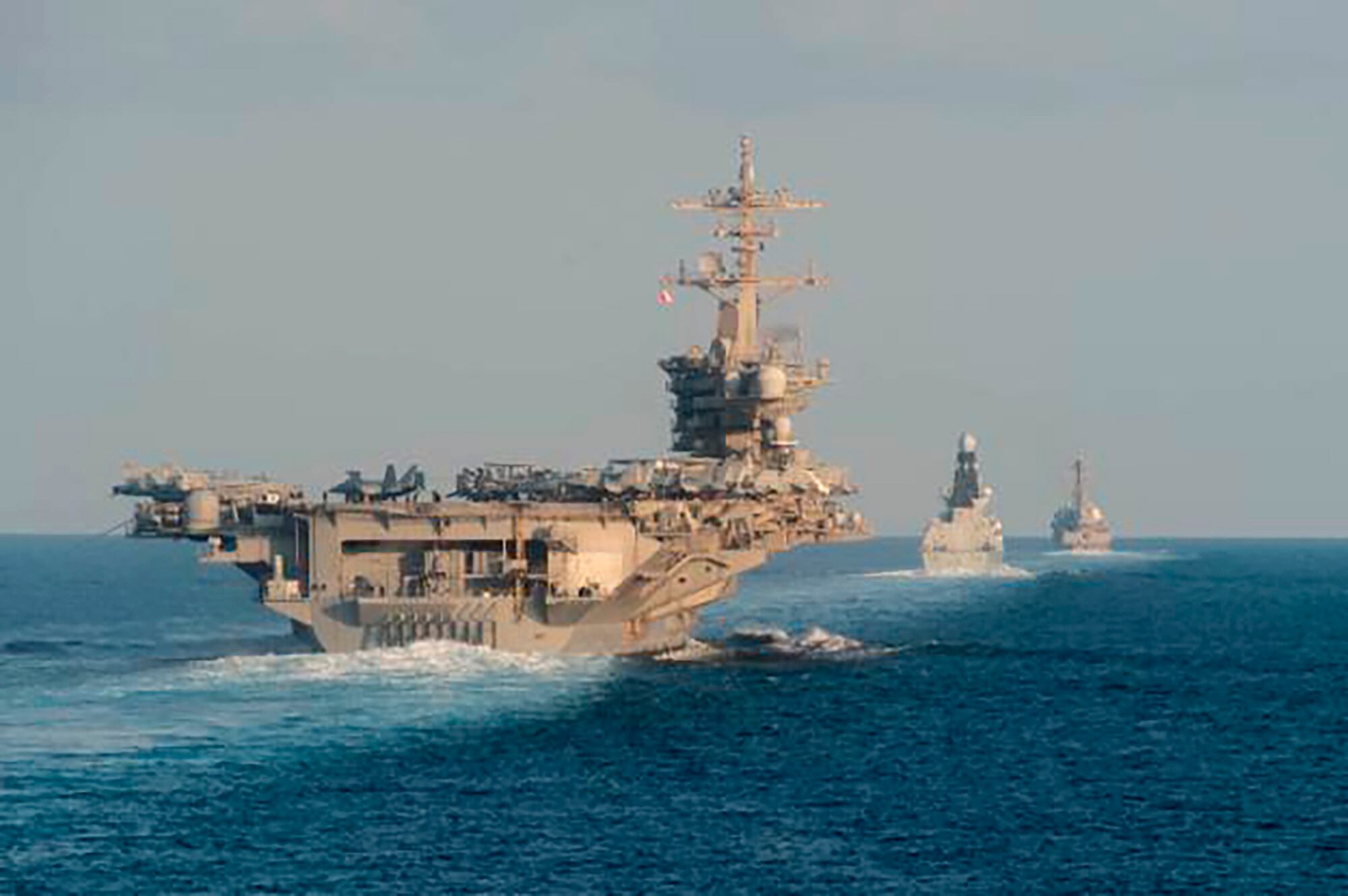As the U.S. flexes troops, ships and aircraft to the Middle East to deter Iranian threats, Tehran appears to be answering in kind by bolstering missile forces, adding new fast-attack ships and moving troops across the region.
CNN reported, citing U.S. defense and administration officials, that intelligence gathered throughout November indicates a potential Iranian threat aimed at American forces in the region.
Iran has been moving troops and weapons throughout the region that could be used for a potential attack, according to CNN.
To deter Iranian aggression in the region, the Wall Street Journal reported Wednesday that President Donald Trump is considering deploying nearly 14,000 more troops to the Middle East, which could include dozens more ships and equipment.
The deployment of 14,000 additional troops would double the forces U.S. officials already announced were deploying in the wake of the suspected Iranian attack on two oil fields in Saudi Arabia in September.
RELATED

Those American forces and equipment largely consisted of Patriot missile battery units and F-15 fighter aircraft.
Alyssa Farah, the Pentagon press secretary, pushed back on the Wall Street Journal’s reporting in a series of tweets Wednesday night, stating that the U.S. was “not considering” deploying an additional 14,000 troops to the Middle East to counter Iran.
John C. Rood, the undersecretary of defense for policy, told lawmakers Thursday that the reporting of 14,000 additional U.S. troops to the Middle East was “erroneous."
“We haven’t made a decision to deploy an additional 14,000 troops,” Rood told lawmakers. The Wall Street Journal reported that the 14,000 additional troops were an option, not that a final decision had been reached.
But Rood explained that the Pentagon was observing Iran’s behavior with “concern.”
In a heated exchange, Missouri Republican Sen. Josh Hawley asked Rood if the Pentagon press secretary had misspoke when she said an additional 14,000 troops were not under consideration.
Rood said that the Pentagon is “always considering changes to our force posture." Rood did not elaborate on any potential additional force size or structure that is under consideration by the DoD to deploy to the Middle East.
RELATED

The U.S. also positioned an aircraft carrier in the Persian Gulf prior to Thanksgiving. In late November, the Nimitz-class aircraft carrier Abraham Lincoln transited the Strait of Hormuz.
But as the U.S. rebuilds its forces in the region in what looks like a redux of the American buildup prior to the Iraq invasion in 2003, Iran appears to be answering in kind.
The tit-for-tat militarization between Iran and the U.S. is pushing the two combative foes closer to the brink of war highlighting a potential failure of the Trump administration’s stick approach to deterring Tehran’s malign behavior in the region.
The New York Times reported, citing American military and intelligence officials, that Iran has been using the recent chaotic protests in Iraq to move short-range ballistic missiles into the country.
Intelligence officials told New York Times that the missile systems pose a threat to U.S. troops an allies in the region. Should a wider conflict break out between Iran and the U.S., Tehran could use the missiles to strike allies like Israel.
And the Associated Press reported that the U.S. Navy and U.S. Coast Guard seized a cache of suspected Iranian missile parts in the northern Arabian Sea that were headed to Houthi rebels in Yemen.
Officials told AP that the weapons cache was the first time such sophisticated weapons parts had been taken to the conflict in Yemen.
Iranian-backed Houthi rebels have been embroiled in a civil war with Yemen’s central government since the country began to destabilize and collapse in 2015.
Moreover, state-run Iranian Fars News Agency reported in late November that the Islamic Revolution Guards Corps Navy would take delivery of a large number of fast-attack speed boats by the end of the Iranian year, which is in March.
Iranian speed boats have been known to harass U.S. warships and merchant vessels operating in the Persian Gulf and Strait of Hormuz.
Fars also reported that Iran will soon take delivery of a new destroyer dubbed Dena.
“Concurrently, we will witness the launch of a mine-clearing warship, Saba, in the Navy as well as a drone, namely Simorq, which has a flight durability of 24 hours and capability to carry different types of weapons, including bombs, rockets and projectiles,” Rear Admiral Hossein Khanzadi, said in late November, according to Fars.
News of the potential deployment of thousands of additional American troops to the Middle East received widespread criticism from national security experts who argue more attention needs to be paid towards rising near-peer rivals.
“The Pentagon can’t seem to shed missions and requirements to better focus on great powers — especially China,” Mackenzie Eaglen, a resident fellow for the American Enterprise Institute, previously wrote in an opinion column for War on the Rocks about near-peer challenges.
“For example, the military is building back up in the Middle East to deter Iran (not a great power by any definition), negating the benefits of a modest troop withdrawal in Syria,” Eaglen wrote.
Hawley tweeted Wednesday evening following news the Trump administration was considering bolstering troops in the Middle East and asked whether the Pentagon was preparing for a land war in the region.
“I look forward to hearing tomorrow in Senate Armed Services why the Pentagon reportedly wants 14,000 MORE troops in the Middle East, after sending 14,000 already this year alone. Is the Pentagon preparing for a land war?” Hawley tweeted.
Shawn Snow is the senior reporter for Marine Corps Times and a Marine Corps veteran.




